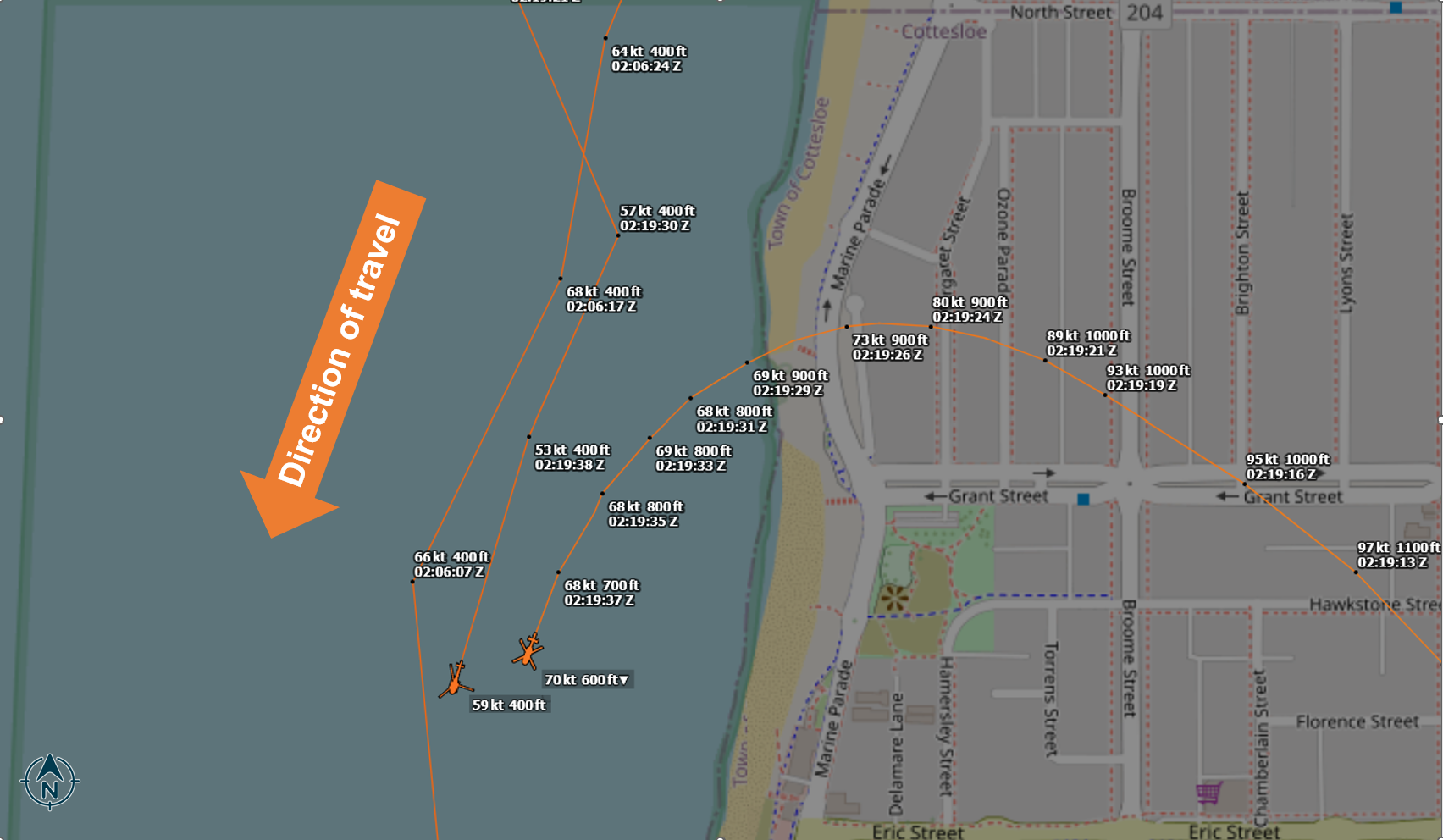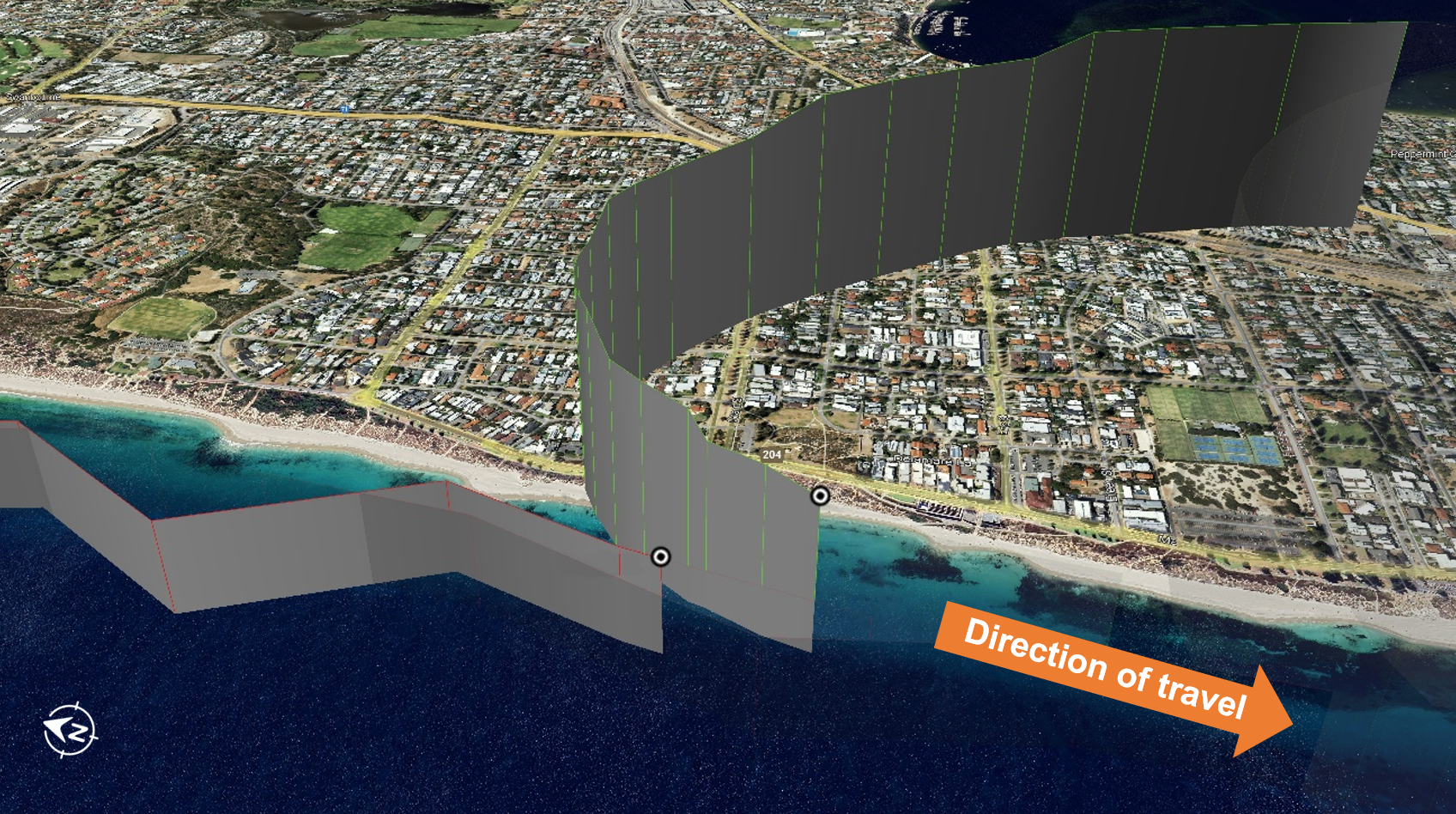What happened
On 2 February 2025, the crew of an Aerospatiale Industries AS.350BA helicopter was conducting routine beach patrols for a local surf lifesaving association. Shortly before 1020 local time, the helicopter was travelling south on the Perth, Western Australian coastal VFR route and passed the City Beach tracking point at about 300 ft AMSL. At the same time, the pilot of a Bell Helicopter Company B206 operating a sightseeing flight with 3 passengers, was tracking north-west; approaching the Cottesloe VFR approach point at an altitude of about 1,500 ft. Shortly thereafter, as the B206 crossed the coast, the pilot commenced a descending left turn to take up a southerly track, converging with and crossing in front of the AS.350 as it descended.
The AS.350 pilot reported that the rear left-seat air crew officer had observed the B206 ‘on our left, close’ but had assumed the helicopter was still at 1,500 ft, based on an earlier position and intent radio call. Observing the B206 then descending in front of the helicopter, the AS.350 pilot made an immediate turn to the west to ensure separation was maintained, before calling the B206 directly to advise of the conflict.
The B206 pilot reported that when they broadcasted their position and intent after leaving the Jandakot control zone, ATC had advised of the AS.350’s location (City Beach) and altitude (300 ft) but they had not heard any radio calls from the helicopter itself. The pilot had not seen the AS.350 when approaching the coast and only became aware of the conflict when advised by the AS.350 pilot.
Both helicopters were equipped with Automatic Dependent Surveillance – Broadcast (ADS‑B) technology. The B206 system provided basic ADS‑B ‘Out’ functionality (transmit only), while the AS.350 utilised a portable ‘Sky Echo’ system (SkyEcho - uAvionix) that provided both transmit and receive operation (ADS‑B ‘Out’ and ‘In’). Based upon recorded tracking information from these systems (Figures 1 and 2), the 2 helicopters came within about 100 metres horizontally and 200 ft vertically during the conflict.
Safety action
Following the serious incident, both helicopter operators reviewed the known details and event development with operational staff. The B206 operator advised of an ongoing internal investigation and issue of a Safety Bulletin under its Safety Management System (SMS) – highlighting the need for continuous situational awareness and communication – particularly in areas of higher traffic density such as transit lanes. Plans for an upgrade of the B206’s avionics to include full ADS‑B In and Out functionality was also announced.
Figure 1: Flight tracks as the 2 helicopters came into proximity

Source: ADSB-Exchange (https://www.adsbexchange.com/), annotated by the ATSB
Figure 2: Helicopter track data presented in perspective view

Source: Google Earth, with track data from ADSB-Exchange (https://www.adsbexchange.com/), annotated by the ATSB
Safety message

The ATSB SafetyWatch program highlights the broad safety concerns that come out of our investigation findings and from the occurrence data reported to us by industry. One of the safety areas is encouraging the use of available technology to enhance safety.
In this instance, while both helicopters were equipped with Automatic Dependent Surveillance – Broadcast (ADS‑B) technology, the broadcast‑only functionality of the system in the B206 prevented its use for enhancing the pilot’s situational awareness when approaching the coastal transit lane.
The VFR transit lanes along the Perth terminal area coastline are popular sightseeing and operational routes, with, at times, multiple smaller aircraft operating within the lanes. Operators and pilots of aircraft operating in these lanes should consider the limitations of the visual ‘see and avoid’ principle and utilise all available methods and technologies for ensuring safe aircraft separation.
About this report
Decisions regarding whether to conduct an investigation, and the scope of an investigation, are based on many factors, including the level of safety benefit likely to be obtained from an investigation. For this occurrence, no investigation has been conducted and the ATSB did not verify the accuracy of the information. A brief description has been written using information supplied in the notification and any follow-up information in order to produce a short summary report, and allow for greater industry awareness of potential safety issues and possible safety actions.


